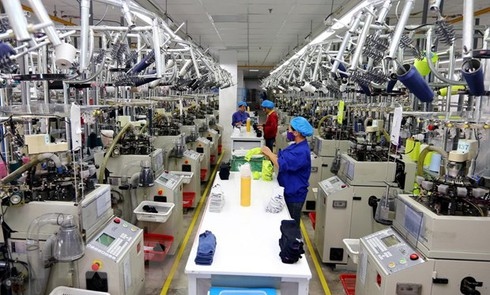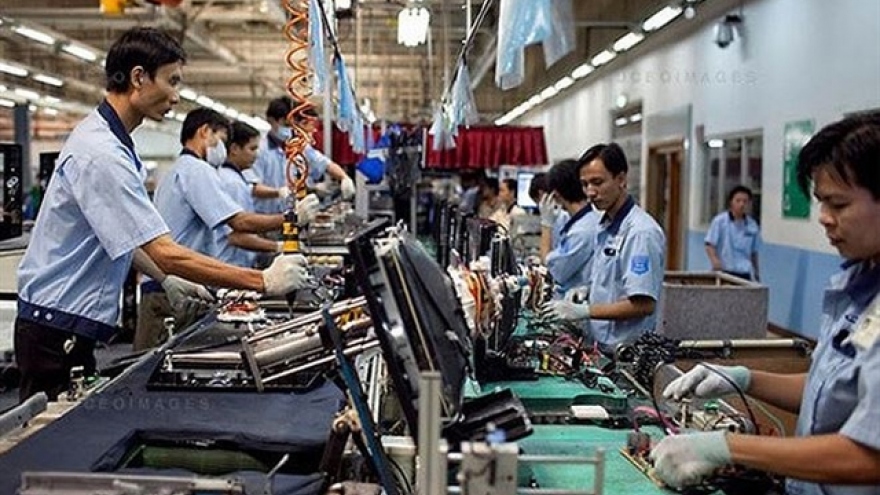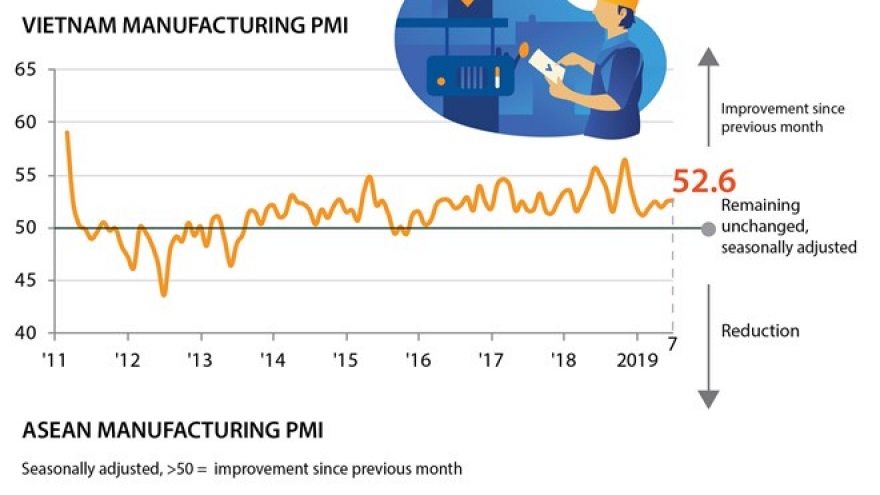Local manufacturing PMI drops to 45.7 in August
VOV.VN - The Vietnam Manufacturing Purchasing Managers’ Index (PMI) suffered a sharp fall from 47.6 in July to 45.7 in August due to the impact of the novel coronavirus (COVID-19) pandemic, according to a survey released on September 1 by IHS Markit.
The survey details how the effects of the COVID-19 pandemic led to a deterioration of business conditions among the manufacturing sector in August.
Most notably, both output and new orders fell for the second consecutive month, and to a greater extent than what had been recorded in July, while the rate of job cuts was also accelerated.
The decline in the Vietnam Manufacturing PMI represented a second successive deterioration in terms of the health of the local manufacturing sector, after previously enjoying a return to growth in June.
The latest decline to occur in business conditions can be considered much less severe than that seen during the worst of the COVID-19 related downturn back in April, according to figures within the survey.
Respondents indicated that the negative effects of the COVID-19 pandemic has led to declines to occur in both output and new order, with new businesses declining at a solid pace amid reports of weak customer demand.
Data also indicates a sharp reduction in relation to new export orders, with this rate being faster in new businesses. The latest reduction to hit the manufacturing output was the eighth to occur over the past nine months, and far faster than what had been recorded in July. All three broad sectors recorded falling output, with the rate of contraction being sharpest for intermediate goods producers.
The decline in new orders led to further reductions to occur in both backlogs of work and employment, especially due a lack of pressure on operating capacity. Whilst the depletion rate in outstanding business remained sharp, firms moved to scale back their staffing levels to an extent only exceeded during the worst of the downturn during April.
Furthermore, a faster reduction in purchasing activity was also seen amid lower new orders and production requirements. However, the fall in input buying was still far weaker than had been previously seen in April's record. Elsewhere, the scaling back of inventories also continued, with stocks of both purchases and finished goods witnessing a decline in August.
Moreover, a number of respondents also indicated that finished products had been dispatched to customers as soon as they were ready in order to avoid a build-up of inventories.
Input prices also increased for the third month running in August, albeit at only a pace that was slightly slower in comparison to the average, with a scarcity of materials occurring due to the COVID-19 pandemic being the principal reason of the rise in input costs, according to respondents.
Similarly, the impact of the COVID-19 pandemic was central to the increase in the delivery times of suppliers, with manufacturers responding to weak demand conditions by lowering their output prices again midway through the third quarter of the year.
As selling prices have now decreased in each of the past seven months, the latest fall is the fastest to occur since May. At present, there are many concerns relating to the ongoing effects of COVID-19 on demand, a factor which has led to a drop in confidence among manufacturers regarding their 12-month outlook for production.
In general, local firms still predict that output will rise over the coming year, with many hopeful that the pandemic will be brought under control shortly. Despite this, optimism was at its weakest point since the series began in April, 2012.
Andrew Harker, economics director at IHS Markit, said the data is currently moving in the wrong direction, with the latest PMI data for Vietnam highlighting the ongoing effects of COVID-19 on the manufacturing sector, in addition to the challenges faced in trying to overcome them as customer demand remains weak, with firms scaling back production accordingly.
“The picture around employment was particularly worrying, with jobs lost at the second fastest pace in nine-and-a-half years of data collection. Firms will be hoping that the virus can be brought back under control so that the recovery that got underway in June can get back on track”, noted Harker.



